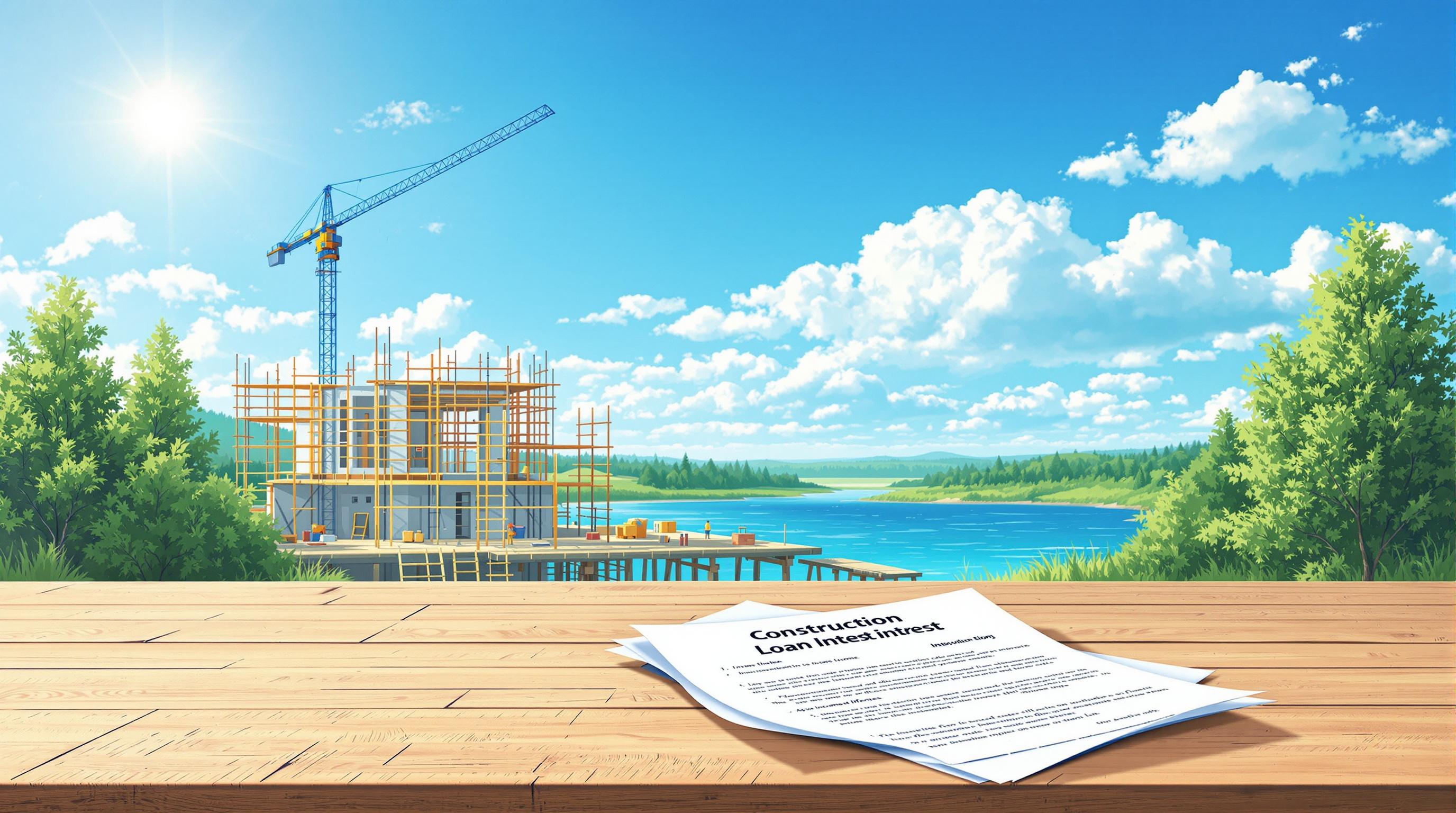Choosing between light-wood and mass timber construction for Halifax apartments comes down to cost, timelines, and material availability. Here's what you need to know:
- Light-Wood Construction: Uses traditional lumber and engineered wood. Costs range from $160,000–$200,000 per unit. It benefits from local supply chains but may face delays due to weather and fragmented subcontractor coordination.
- Mass Timber Construction: Relies on prefabricated wood panels like CLT and NLT. It can shorten timelines (as little as 6 months) but comes with higher material costs and limited local sourcing options.
Key Takeaway: Both methods can meet Halifax's growing rental demand, but efficient project management is critical to avoid delays and cost overruns.
Quick Comparison
| Factor | Light-Wood Construction | Mass Timber Construction |
|---|---|---|
| Material Costs | Lower, with locally available materials. | Higher, often requiring inter-provincial sourcing. |
| Timeline | 8–12 months, but delays are common without coordination. | 6 months with prefabrication, if teams are aligned. |
| Labour Requirements | Higher on-site labour needs. | Reduced labour due to prefabrication but still skilled. |
| Material Availability | Strong local supply chains. | Limited local manufacturing, longer lead times. |
Integrated project coordination is the key to staying on budget and meeting timelines, regardless of the construction method.
Mass Timber in Multi-Family Housing
1. Light-Wood Construction
Light-wood construction is a widely used method for building multi-unit rental properties in Halifax. This technique relies on a mix of traditional lumber framing and engineered wood products like laminated veneer lumber (LVL) and glue-laminated timber (glulam). Together, they meet local building codes while allowing for flexible design possibilities.
However, traditional light-wood construction often involves juggling multiple specialized subcontractors. This fragmented process can lead to delays, quality control issues, and cost overruns ranging from 30% to 60%. These problems are often tied to factors like unpredictable weather, fluctuating material costs, and poorly aligned work schedules.
Halifax's maritime climate introduces additional hurdles. Winter weather can require extra protective measures, stretching project timelines. For property owners, it's essential to weigh the benefits of this construction method against the potential risks of higher expenses and extended build times.
On top of that, incorporating energy efficiency upgrades, such as those under CMHC MLI Select, can enhance building performance but come with higher upfront costs. Regular maintenance of cladding and weatherproofing is also crucial to withstand Halifax’s climate.
An alternative to these challenges is adopting integrated approaches, which streamline the planning process and offer fixed pricing to minimize scheduling and cost uncertainties. Up next, we’ll explore how mass timber construction tackles these issues head-on.
2. Mass Timber Construction
Mass timber construction is becoming an increasingly popular choice for multi-unit buildings in Halifax's rental market. This approach uses engineered wood products like cross-laminated timber (CLT) and nail-laminated timber (NLT) to create structural components, offering an alternative to traditional materials like concrete and steel for mid-rise buildings.
While mass timber typically involves higher material costs compared to light-wood construction, these costs can often be offset by faster construction timelines and lower labour demands. The use of prefabricated panels streamlines assembly, allowing projects to progress more quickly and enabling rental income to start sooner.
However, sourcing materials can pose challenges. Even though Atlantic Canada has an abundance of forest resources, local manufacturing capacity for mass timber products is limited. This means many projects rely on materials from other provinces, which can introduce transportation logistics and increase lead times.
The precision required for mass timber installation underscores the importance of an integrated construction approach. When design, engineering, and construction teams work in harmony, the risks of miscommunication and costly rework are minimized, leading to smoother project execution.
Mass timber also offers additional advantages, including better energy efficiency and a visually appealing finish. Its natural properties often enhance energy performance, helping meet strict building code requirements when combined with targeted engineering reviews. The exposed wood aesthetic, combined with improved acoustic performance, can make rental units more appealing to potential tenants.
Although securing financing for mass timber may involve extra documentation, the material's durability and reduced settling can lead to lower maintenance costs over the building's lifetime.
sbb-itb-16b8a48
Advantages and Drawbacks
Weighing the pros and cons of light-wood versus mass timber construction can help Halifax property owners make informed decisions based on their project goals and budgets. The comparison below highlights key factors, building on earlier insights about how coordination impacts timelines and costs.
| Factor | Light-Wood Construction | Mass Timber Construction |
|---|---|---|
| Material Costs | Benefits from locally available materials in Atlantic Canada. | May involve higher upfront costs, especially when materials need to be sourced from outside the region. |
| Construction Timeline | Typically follows a conventional timeline of 8 to 12 months when coordination is lacking. | Prefabricated components can shorten on-site assembly to about 6 months - if the project team is well-coordinated. |
| Labour Requirements | Requires more on-site labour for assembly and finishing. | Prefabrication reduces some on-site labour needs, but skilled installation is still essential. |
| Material Availability | Strong, thanks to abundant local forest resources and established supply chains. | May face delays due to limited local manufacturing, often requiring inter-provincial sourcing. |
These factors highlight the critical role that integrated project coordination plays in keeping timelines and budgets on track. Without proper coordination, fragmented construction methods can lead to budget overruns of 30–60% due to delays and miscommunication.
Timeline reliability is especially important when rental income depends on finishing the project on time. A poorly coordinated approach can stretch an 8-month schedule to 18 months or more. Even with materials like mass timber, which offer high prefabrication potential, the time-saving benefits only materialize if the project teams are aligned and working together efficiently.
Long-term profitability depends on both the choice of materials and streamlined construction practices. Minimizing delays and waste is crucial for achieving a strong return on investment (ROI), no matter the construction method. While mass timber can support premium rental rates, its higher upfront costs make efficient project management vital.
Which Construction Method Works Best
When it comes to construction, the real game-changer isn’t the material you choose - it’s how the project is managed and delivered. Issues like budget overruns and missed deadlines often stem from a disjointed process involving multiple, unaligned contractors rather than the type of material used.
For Halifax’s rental market, light-wood construction remains a practical choice for most properties with four or more units. Its locally supported supply chains keep material costs steady, which helps projects stay on budget and ensures consistent rental returns. That said, these benefits hinge on having an integrated approach to project coordination. Without a unified system, builders risk delays and cost overruns, which can erode these advantages.
Mass timber, while promising, faces similar hurdles. To truly capitalize on its potential, projects need a solid, integrated delivery system. Without fixed timelines and pricing, the benefits of this innovative material can quickly be overshadowed by higher upfront costs and increased uncertainty.
In Halifax's competitive rental market, the most dependable method is an integrated design-build approach. This approach offers single-source accountability and fixed pricing - around $160,000 per unit. By streamlining the process and locking in costs, it reduces risks and ensures your property is ready for tenants on time, avoiding the common pitfalls of fragmented project management.
FAQs
What factors should property owners consider when choosing between light-wood and mass timber construction for Halifax apartment projects?
When choosing between light-wood and mass timber construction for apartment projects in Halifax, several factors come into play: cost, environmental considerations, and specific project needs. Light-wood construction often has a lower upfront cost, making it an appealing option for budget-conscious projects. However, mass timber brings its own set of benefits, including a smaller carbon footprint, less need for extensive foundations, and in some cases, quicker construction timelines.
That said, mass timber can come with higher costs, partly because of challenges like managing acoustics and moisture. But with advancements in technology and updates to building codes, it’s becoming a more practical choice. Material availability and long-term advantages, such as potential savings through efficiency, are also important factors to weigh. Ultimately, the decision boils down to finding the right balance between initial expenses, sustainability priorities, and your project’s unique requirements.
How does an integrated construction approach affect costs and timelines for Halifax apartment projects?
An integrated construction approach offers a practical way to cut both costs and timelines for apartment projects in Halifax. By bringing together the design, permitting, and building stages under one unified team, this method eliminates the inefficiencies often found in traditional, fragmented systems.
Rather than dealing with delays caused by juggling multiple contractors, navigating regulatory challenges, or managing supply chain disruptions, this streamlined process keeps everything on track. It can reduce project timelines dramatically - from the usual 18–24 months down to as little as 6 months. On top of that, it provides fixed pricing and a single point of accountability. For property owners, this means rental income starts flowing sooner, boosting profitability and lowering overall risk.
What challenges exist in sourcing materials for mass timber construction in Halifax, and how can they be resolved?
Sourcing materials for mass timber construction in Halifax presents some hurdles, primarily due to the region's limited production capacity. At the moment, much of the mass timber used across Canada is imported from Europe. This reliance on overseas suppliers often leads to longer delivery times and increased costs. While there’s promising news of a local manufacturing plant set to open in Nova Scotia by 2026, the current supply chain challenges remain a short-term concern.
To tackle these obstacles, focusing on building regional supply chains and investing in local production facilities is essential. These measures can reduce dependence on imports, ensure materials are more readily available, and streamline construction timelines for Halifax and the surrounding areas.



